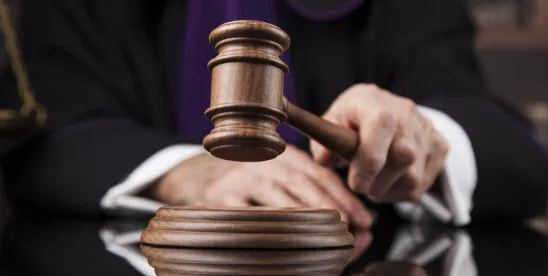The gavel drops. Bang! Bang! There you sit as judge. The parties have come to you with a very complicated, rather unique dilemma regarding discovery of information exchanged with a consulting expert.
Communications with a consulting expert are not discoverable, you tell yourself. “But, Your Honor, the consulting expert in this case was later retained as the testifying expert,” defense counsel points out, sensing your hesitation. Now things get messy. The line is blurred between a consulting expert, who is protected, and a testifying expert. You must make the tough decision as to what is permitted. Let’s see if you would agree with Judge Casey Rogers’ handling of this very matter in a recent opinion out of the Northern District of Florida. The expert issue is now yours to unravel. You be the judge!
The Abilify Case
Plaintiffs’ counsel in a pharmaceutical case brought in a consulting expert, Dr. Mahyar Etminan, to conduct research and consult with them about causation. In Re: Abilify (Aripiprazole) Prods. Liab. Litig., 2017 U.S. Dist. LEXIS 73847 (N.D. Fla. May 15, 2017). After completing his research, Dr. Etminan published a study finding Abilify to be a cause of gambling and impulse control disorders—conveniently the very allegations asserted by plaintiffs in the Abilify case and, interestingly, the only such study in existence making this connection. Plaintiffs’ counsel then officially retained Dr. Etminan as a testifying expert.
Defense counsel sought to depose him on the methodologies used in his research, particularly whether his communications with plaintiffs’ counsel had any impact on how he conducted his study. Plaintiffs’ counsel naturally objected, citing two grounds to prohibit the deposition: 1) Fed. R. Civ. P. 26(b)(4)(D) and its accompanying 1970 Advisory Committee Note which precludes discovery against experts who are merely informally consulted in preparation for trial but not retained or specifically employed; and 2) Fed. R. Civ. P. 26(b)(3)’s “work product” exclusion which protects an attorney’s mental opinions and legal strategies for the case.
First, on the consulting expert issue, discovery from informal, non-retained experts is generally prohibited. As the defense pointed out, plaintiffs’ counsel should not be permitted to say the study (which supports their theory of causation) is peer-reviewed if the lawyers had done just as much reviewing as Dr. Etminan’s true peers. Because this line of inquiry went straight to Dr. Etminan’s potential bias, Judge Rogers permitted discovery of communications during Dr. Etminan’s consulting expert phase to determine whether his communications with plaintiffs’ counsel affected his research and resulting opinions. Specifically, Judge Rogers noted the timing of contact, who initiated the contact, and whether Dr. Etminan changed any of his methodologies after communicating with plaintiffs’ counsel would be particularly relevant.
Second, on the work product matter: Defense counsel asserted that any improper influence on the Abilify study would constitute a waiver of the work product protection. Here, Judge Rogers offered a bit more protection, stating specifically, if a response to any inquiry would divulge any of plaintiffs’ counsel’s opinions or case strategy, the information would remain protected. Only if it became apparent during the deposition that Plaintiffs' counsel had input into Dr. Etminan's methodology for the study, then the parties were instructed to contact Judge Rogers or the magistrate judge to obtain a ruling on whether that input constituted a waiver of the work product privilege.
Questions to Consider
Take a moment to think about those two arguments and how they may or may not apply here. While Dr. Etminan is currently a retained, testifying expert, defense counsel is indeed seeking to discover communications exchanged with plaintiffs’ counsel while he was serving as merely a consulting, non-retained expert. Does that make them undiscoverable, or does the expert’s potential bias outweigh such protection? Regarding the work product objection, do you feel plaintiffs’ counsel waived that protection if they did indeed improperly influence the study? Try to make the call before we run through Judge Rogers’ deft handling of this matter.
Conclusion
So, how did you do? Was your “ruling” in line with Judge Rogers or did you perhaps foresee and deal with different issues she did not address? As experts at finding experts, we know attorneys can sometimes walk a fine line when dealing with consulting experts versus testifying experts, particularly when consulting experts are later formally retained. Keep this in mind when you are communicating with consulting experts. Work to actively protect those communications, as well as any opinions or case strategies they may contain.




 />i
/>i

